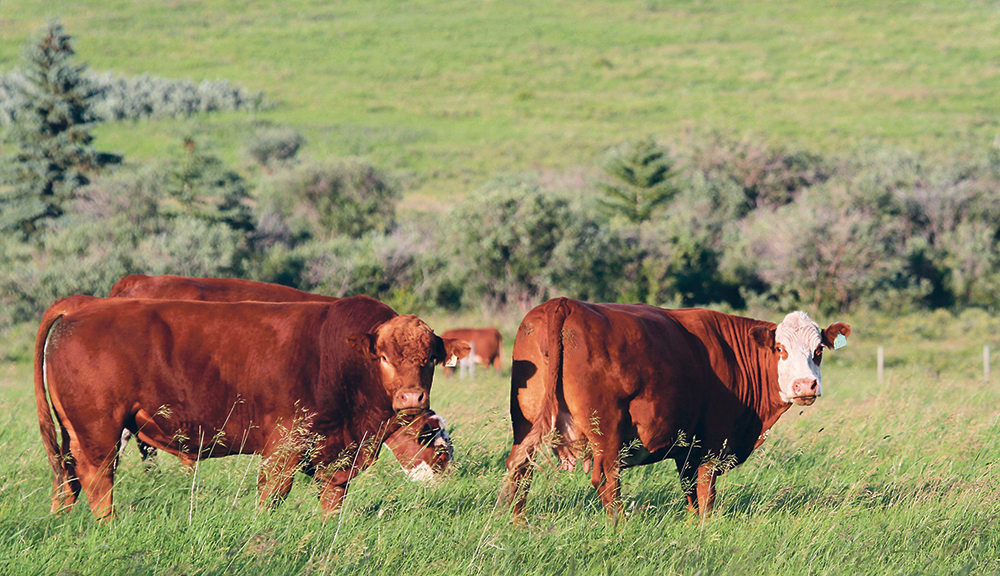Disease outbreaks in New Zealand showed authorities how few farmers had complied with a national ID and tracing law
Premises identification is one of the three pillars of livestock traceability but producers are not always supportive.
Knowing the premise identification number of a farm or any other place where animals live is useful to track disease but the information can be used to alert owners about emergencies, such as floods, fires or an environmental risk like a pipeline leak. People can be contacted faster and if necessary, told to evacuate, or emergency services can be dispatched sooner, said Allan Pelletier of the livestock traceability division of Alberta Agriculture.
Read Also

Beef check-off collection system aligns across the country
A single and aligned check-off collection system based on where producers live makes the system equal said Chad Ross, Saskatchewan Cattle Association chair.
“Knowing where the animals are allows us to be a little more precise in terms of contact and notifying the at-risk farm,” he said at the International Livestock Identification Association conference held at Spruce Meadows near Calgary July 15-17.
Without contact information, first responders might be forced to spend more time searching for farms when trouble arises.
In Alberta, there are 45,000 unique premise numbers identified and verified to date, said Steve Malowany, traceability program officer with Alberta Agriculture.
Alberta producers need to have a PID number for livestock manifests, buying medication, selling livestock at auctions or applying for agriculture grants and programs.
Alberta has licensed its PID system to British Columbia and Saskatchewan so the processes are similar.
There are struggles in keeping data current because people may periodically change email addresses or phone numbers.
More people are registering every year and since many municipalities allowed backyard flocks and other small holdings, more premises need to be registered. Animal owners outside the usual lines of commerce are harder to reach, said Malowany.
Canada is not the only place where these programs are established. But as in Canada, many other jurisdictions are finding gaps in information and are having struggles convincing farmers to join.
New Zealand introduced the National Animal Identification and Tracing System in 2012. Anyone with cattle or deer was required to tag animals and register their premises.
Until the country had to deal with bovine tuberculosis and mycoplasma bovis, authorities did not realize how few complied, said Tanya Robinson, program manager, and Kevin Forward, head of the national identification and tracing scheme.
New Zealand is an exporting nation and has become a dairy powerhouse with annual exports of NZ$16.6 billion (C$14.6 billion). Beef exports in 2018 were worth $6.7 billion (C$5.9 billion). Protecting those exports is critical.
Traceability in New Zealand requires an animal status declaration similar to a paper manifest to report movement of all farmed animals. Electronic ear tags are used for identifiers, and all animals are supposed to be registered with the national database.
The total budget is $7.2 million per year with $2.4 million from government and the rest from industry levies on tags.
New Zealand producers are responsible for tagging, registering animals and recording movement. They need to tag calves and register them within six months of birth and it is an offence to transport untagged animals.
When the government and livestock groups decided to eliminate tuberculosis, flaws appeared. The goal is to eradicate TB from livestock by 2026 and possums by 2040 and all other hosts of the disease by 2055.
Tracking animals across rough terrain in areas where people did not have internet service or reliable phone service was challenging.
“The system was there but compliance wasn’t actually done because farmers couldn’t see the value,” Forward said.
“If this had been foot and mouth, our whole economy would have been crippled,” he said.
The situation was exacerbated when the New Zealand government decided to eradicate Mycoplasma bovis after the disease was found in a dairy herd in 2017.
The government provided $850 million over 10 years to eradicate it with about half spent in the first two years. Industry provided more funds with most coming from the dairy sector.
Herds are screened with blood tests and positive herds are depopulated. Farms are then cleansed and farmers are compensated at market replacement rates. About 50 farms had confirmed cases of the disease and 180 properties had movement restricted.
Recommendations to improve the system were released in 2019 because of problems discovered during disease traceback.
In February, a major campaign was launched for farmers to re-register their locations. About 95,000 were sent letters to update their accounts and more than half have complied.
Contacting and registering small operations with fewer than 20 animals has been challenging.
Enforcement starts next year with fines starting at $150 per animal per offence.
Enforcement is expected to be hard-nosed, said Forward.
“This is not a government regulatory scheme. This is about protecting your livelihood,” he said.


















